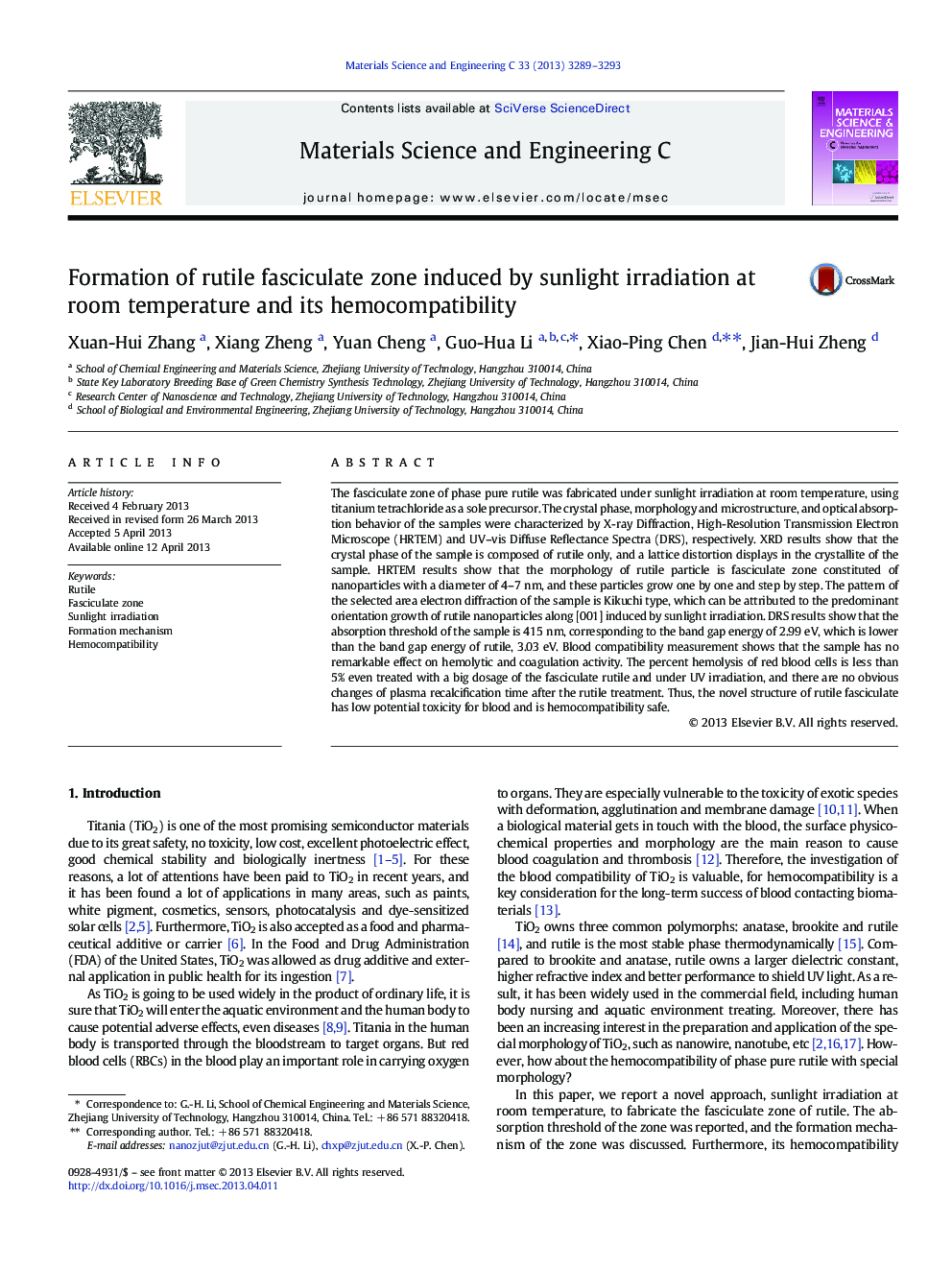| کد مقاله | کد نشریه | سال انتشار | مقاله انگلیسی | نسخه تمام متن |
|---|---|---|---|---|
| 1429176 | 987165 | 2013 | 5 صفحه PDF | دانلود رایگان |

• A novel approach to fabricate the fasciculate zone of phase pure rutile
• The fasciculate grows from a particle to nanorod and to fasciculate, step by step.
• A preferred orientation growth induced by sunlight irradiation in the fasciculate
• The rutile fasciculate is low toxicity for blood and is hemocompatibility safe.
The fasciculate zone of phase pure rutile was fabricated under sunlight irradiation at room temperature, using titanium tetrachloride as a sole precursor. The crystal phase, morphology and microstructure, and optical absorption behavior of the samples were characterized by X-ray Diffraction, High-Resolution Transmission Electron Microscope (HRTEM) and UV–vis Diffuse Reflectance Spectra (DRS), respectively. XRD results show that the crystal phase of the sample is composed of rutile only, and a lattice distortion displays in the crystallite of the sample. HRTEM results show that the morphology of rutile particle is fasciculate zone constituted of nanoparticles with a diameter of 4–7 nm, and these particles grow one by one and step by step. The pattern of the selected area electron diffraction of the sample is Kikuchi type, which can be attributed to the predominant orientation growth of rutile nanoparticles along [001] induced by sunlight irradiation. DRS results show that the absorption threshold of the sample is 415 nm, corresponding to the band gap energy of 2.99 eV, which is lower than the band gap energy of rutile, 3.03 eV. Blood compatibility measurement shows that the sample has no remarkable effect on hemolytic and coagulation activity. The percent hemolysis of red blood cells is less than 5% even treated with a big dosage of the fasciculate rutile and under UV irradiation, and there are no obvious changes of plasma recalcification time after the rutile treatment. Thus, the novel structure of rutile fasciculate has low potential toxicity for blood and is hemocompatibility safe.
Figure optionsDownload as PowerPoint slide
Journal: Materials Science and Engineering: C - Volume 33, Issue 6, 1 August 2013, Pages 3289–3293